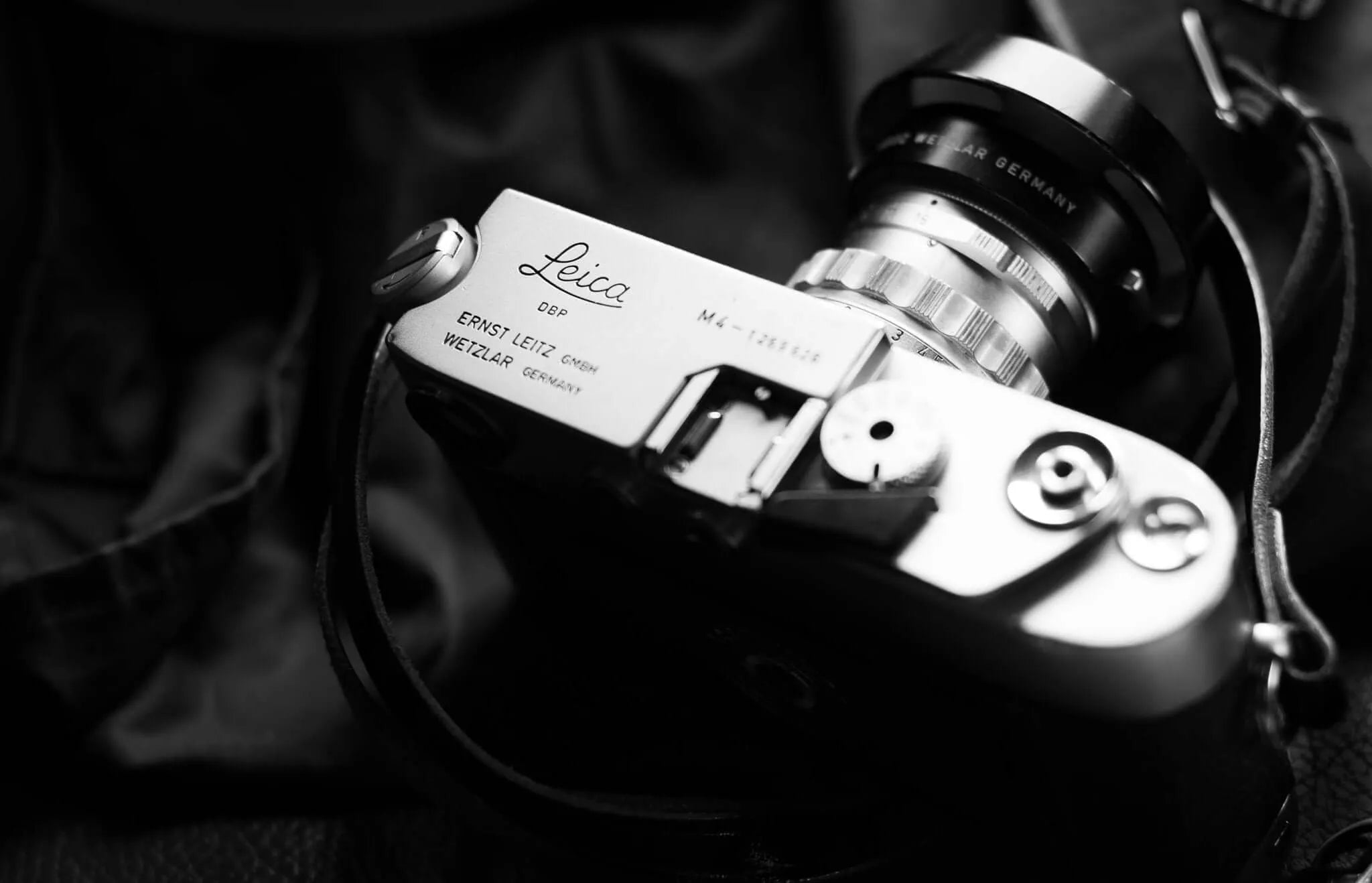
The best Leica models in history
What began as the first ever 35mm camera has now grown into a handsome line of Leica models that includes analog rangefinder cameras, SLRs, digital cameras, and, since 2021, even a Leica cell phone.
Legendary Leica models
The timeless camera with the characteristic red dot and curved inscription has long been a cult. A lot has happened from the world's first 35mm camera to the legendary Leica M models of the rangefinder camera series, which is still popular today, to the full-frame Leica SL2 camera, which is one of the current favorites from Leica among photo professionals. Some Leica models were a flop and their production was quickly discontinued, others were produced over long periods of time, led by the Leica M3, which had a total run of 226,178 units were produced.
The Ur-Leica
The forerunner model of modern Leicas was assembled by inventor Oskar Barnack in Wetzlar as early as 1914. Suffering from asthma and at the same time passionate about nature photography on long hikes, Barnack wanted to create a camera that could be taken along on forays, unlike the clunky, heavy cameras common at the time. The camera that was to pave the way for the success of the late Leica cameras is now kept in the Leica Museum in Wetzlar. The twin sister of this original Leica provides material for an exciting novel. Oskar Barnack had produced two original Leica models at the time, one of which survived the war well in the museum in Munich, but was then sold at auction and ended up in the hands of private collectors. Since then, this example of the first Leica is considered lost.
You can also find the right camera bag for your equipment and everything you need to protect your camera here in the Oberwerth Shop.. From classic camera bags modern sling bags up to noble photo-beachers and backpacks and backpacks. Of course you will also find hand straps and shoulder straps. Finest craftsmanship from the best materials. Feel free to look around and find the bags & accessories that best suit you and your equipment!
What made this Ur-Leica so special was its tiny size, which is why it was originally named the "Lilliputian". The compact, handy size was made possible by the use of perforated 35 millimeter motion picture film, which ran horizontally in the camera instead of vertically, as had been the norm up to that point. Despite the great success of the first test shots with the new type of camera, its further development and series production had to wait until after the Second World War.
It was not until then, in 1924 and 1925, that the Leica zero series was produced on a trial basis with presumably 23 prototypes. As of June 2022, a camera from this series is officially the most expensive camera in the world. It is the camera that belonged to the legendary inventor of the first Leica camera, Oskar Barnack. Barnack used it to record numerous photos from his family life. The camera, which sold for 14.4 million, bears the name of the inventor engraved on it.
Leica I & II
The first mass-produced Leica camera was the Leica I, which was launched in 1925. It was first sold with a fixed, retractable 50-mm lens, but from 1930 onward it was available with an interchangeable thread and thus the option of different lenses. Even with the first freely available Leica, 36 exposures were possible in rapid succession, which completely changed photography. From 1932, the Leica II appeared with a built-in rangefinder for rapid focusing and new, improved lenses.
The Leica M series
Hardly any other camera has such recognition value as the Leica M. The cameras in this series, especially the first M camera, the Leica M3, had a lasting impact on an entire generation of photographers and also on the photography world as we know it today. There are a full 22 years between the first Leica II and the appearance of the M3, which is hardly surprising given the turbulent events in Europe and the Second World War, which did not spare Leica Kamera AG either.
The first camera in the legendary M series appeared in 1954. For the first time, a camera was available that had an integrated rangefinder and automatic parallax compensation. The camera also offered mirrored-in field limits for 50 mm, 90 mm, and 135 mm. One of the things that made the Leica M special from then on was the compatibility of the new cameras with previous lenses and accessories. By 1967, the Leica M3 alone had been produced 226,178 times.
Hardly less well known is the follow-up model in the series, the Leica M2, which appeared as a less expensive alternative to the M3 and whose design as well as viewfinder and rangefinder system established itself as the standard for all subsequent Leica M models. Other rangefinder cameras in the M series followed with the M4, M6, M7, M8, and M9, and the latest, the M11, released in 2022.
Single-lens reflex cameras from Leica
Although Leica is undoubtedly best known today for its rangefinder cameras from the M series, the company also has other things to offer. As early as 1964, Leica responded to the growing trend toward SLR cameras and launched its first own SLR camera, the Leicaflex. This was followed in 1976 by the first electronic single-lens reflex Leica with aperture priority and selective/integral metering. Today, the main focus is on full-format cameras such as the SL2 are very popular in the world of photography.
The exotics among the Leicas
The fact that Leica can do more than the famous M series is nothing new. Beyond the circles of enthusiasts and experts, however, some Leica models are still little known today. In 2012, for example, the company introduced the Leica M Monochrom, the world's first digital black-and-white camera. This decision to go retro is motivated not only by the hype surrounding the vintage look, but by omitting the color filters in the camera, it also increases sensitivity and minimizes noise. The resolution of the Leica M Monochrom's full-frame sensor turns out just like the M9.
The company has also been venturing into something new since 2016 by producing its first instant camera. The Leica Sofort is visibly based on the Instax models from the Japanese company Fujifilm and is supposed to follow their success. Another exotic Leica model is the company's first cell phone, the Leitz Phone I, unveiled in 2020. So far, it's only being marketed in Japan, and for now remains a fringe product in the Leica world.
Sign up for our newsletter now and get regular updates on our blogs, products and offers! You will also receive a 10% voucher for the Oberwerth Online Shop after successful registration!

